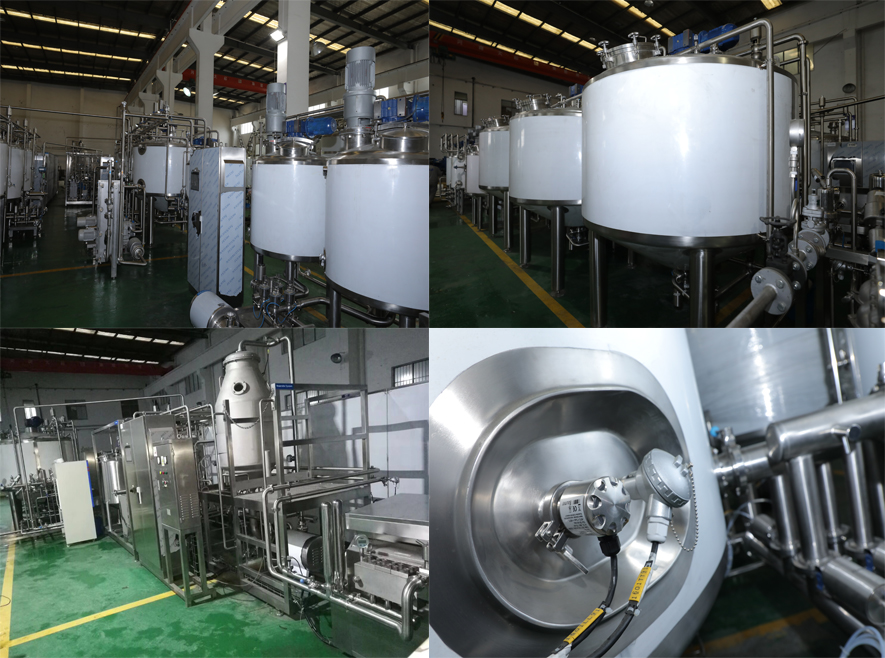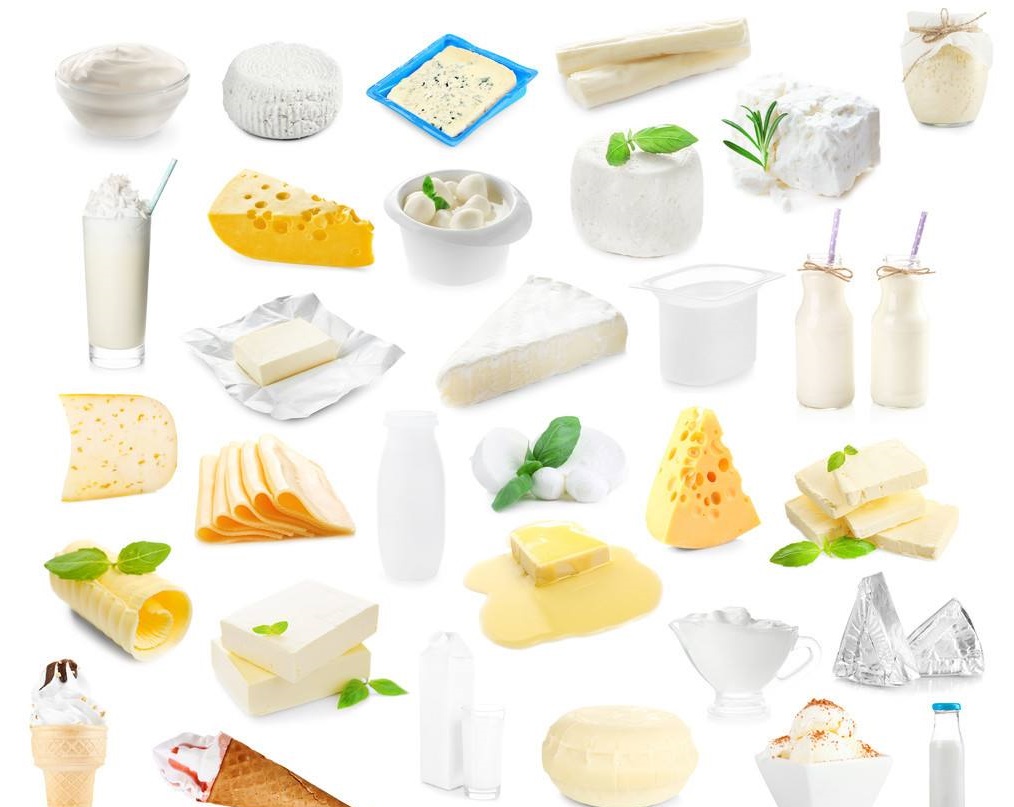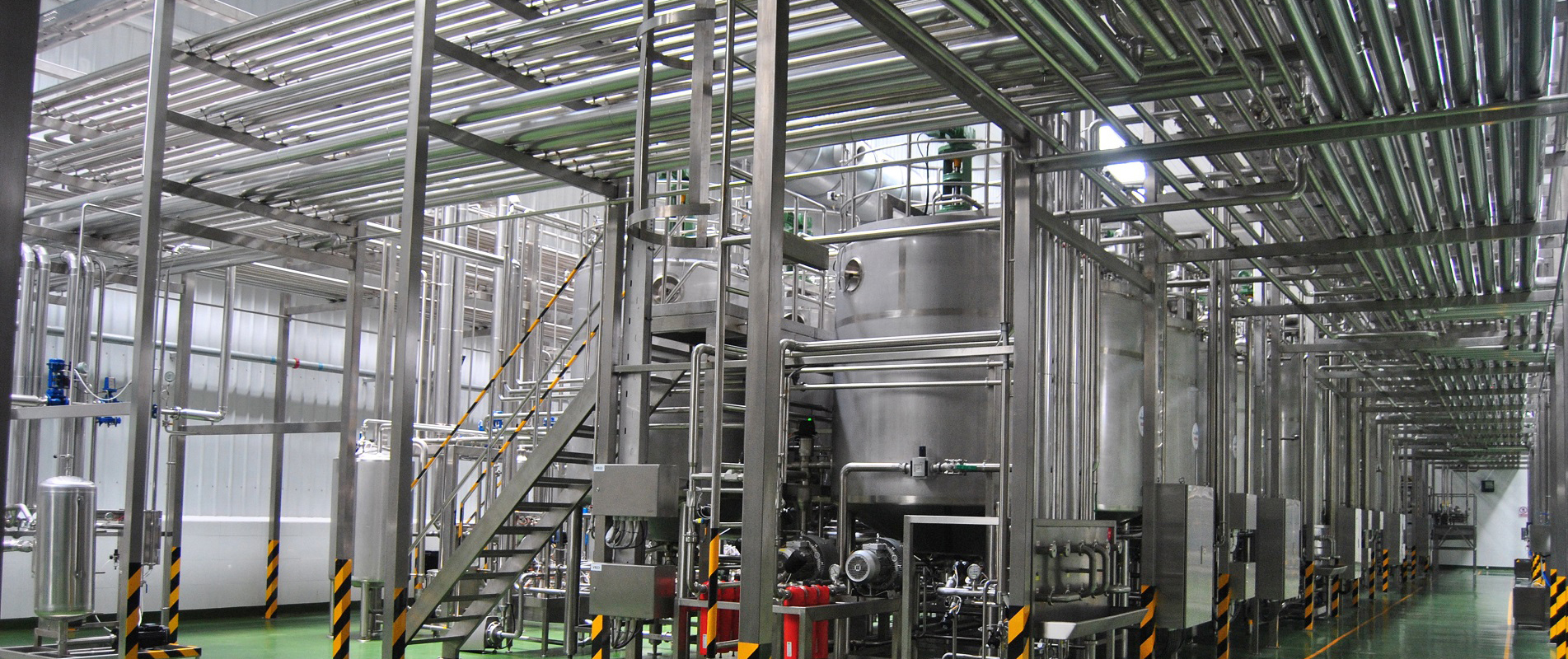Yoghurt
Process flow:
Mixing→Sterilization→Culture feeding→Fermentation→Cooling→Buffering→Filling
↓
ESL sterilization→Buffering→Filling
Mixing system:
Normally,yoghurt take fresh milk or recombined milk as base ingredient, then add sugar、stabilizer and other minor ingredients according to formula.
Mixing system solutions:
Vacuum mixer + buffer tanks + heating/cooling system
Powder/liquid high shear mixer + heating/cooling system
Applications:
Fresh milk as base ingredient
Recombined milk
Sterilization: 95℃ for 300s
Application:
Stirred yoghurt
Set yoghurt
Brown milk drink
Long shelf time yoghurt
Greece yoghurt
Advantages:
Plate heat exchanger used to improve heat exchanging efficiency
System design conform to EHEDG code
Hot Products heat exchanged with cold products, heat recovery rate high up to 90%, steam consumption low to 30kg/t milk, this design reduce public energy markedly, as well as operation cost
Products with heating/cooling medium, and products with products has pressure difference design, to ensure pasteurized products pressure higher than no pasteurized products or medium, reduce products pollution risk and ensure final products quality
There is not too much temperature difference between products and heating/cooling medium when heat exchanging, the heating is soft to ensure products taste, and reduce products incrustation which could prolong continuous running time
It’s convenient to operate through PLC, it also has alarm and data record function which is easy to control unqualified products
Independent CIP circulation system maximize cleaning and energy consumption efficiency
Culture inline feeding system
After pasteurization, culture fed into base ingredients for fermentation, base ingredients flow through the culture tank bottom and top to involve culture, higher culture use ratio
Fermentation system
Fermentation system is the core of yoghurt process, the design will affect products quality and stability
Fermentation tanks are ultra clean, mirror polished, 45ºcone bottom design make discharge and cleaning are easy
Insulated tanks ensure proper fermentation process temperature
Tanks with top entry agitator, it runs when base ingredients feed into tanks, make sure culture evenly distributed into base ingredients, it stops after feeding finish, and start again after fermentation for emulsion broken, but not destroy yoghurt viscosity
Fermentation tanks equipped with aseptic breather valve and aseptic air system, and litter positive pressure protection to avoid pollution from outside
It also equipped with aseptic sampling valves, it make it’s possible for aseptic sampling to check viable organism and physicochemical index
Side feeding design to avoid air bubble
Brown milk fermentation tanks jacketed for heating, after 95º brown stain, it cool down to 38º for fermentation
Cheese fermentation tanks equipped with agitator scraper, it could scrape and collect products when discharge
Automatic valves control, valve block discharge, double seat and double seal mixing-proof valves to avoid cross pollution of different pipe line
Yoghurt cooling system
Last stage of fermentation, when the acid degree reach required point, yoghurt need to cool down to 15-20℃ immediately for fermentation ending, products cooled through special plate heat exchanger, in order to get uniform products, it’s better to empty all fermentation tanks in half hour, normally, the cooled yoghurt stored in buffer tanks for filling
Set yoghurt inline heating system
Pasteurized base ingredient temperature is approx. 5℃, it stored in buffer tanks after culture feeding, when filler is ready for filling, product heated to 42±2℃ through the inline heating system, products stored in fermentation room for insulation
Hot water circulation system provide stable heating temperature, products heated before filling, when filler is broken, the user just need to push products out in pipe line, buffer tank product not affected.
ESL yoghurt pasteurization system
ESL yoghurt pasteurizer used for second pasteurization before filling, it keeps 20 seconds at 75℃, used to extend yoghurt shelf time
Advantages:
Pressured Buffer tank provides stable feeding into pump, especially, the product is high viscosity yoghurt,
Plate heat exchanger with higher heat exchanging efficiency
Smaller product pressure drop
Conform to EHEDG code, special plate used for high viscosity, big gap 3.96mm/316L, higher hygienic and anti-corrosion grade
Hot Products heat exchanged with cold products, this design reduce public energy markedly, as well as operation cost
Hot water used as heating medium, small temperature difference(△t<3℃)
Products with heating/cooling medium, and products with products has pressure difference design, hot water system、ice water system and product system have independent pressure monitoring system, to ensure pasteurized products pressure higher than no pasteurized products or medium
Product reversed during high temperature stage, this design make sure high viscosity products fully sterilized
It’s convenient to operate through PLC, it also has alarm and data record function which is easy to control unqualified products
Sterilizer is self-cleaning, equipped with independent big flow cleaning pump, to ensure complete cleaning
All pipe line elbows has big diameter, it reduces pressure and viscosity loss
The pipe line connected to aseptic tanks equipped with heating and insulation, to ensure low pipe line transporting resistance, and avoid damage to yoghurt viscosity

 +86 15921279869
+86 15921279869











